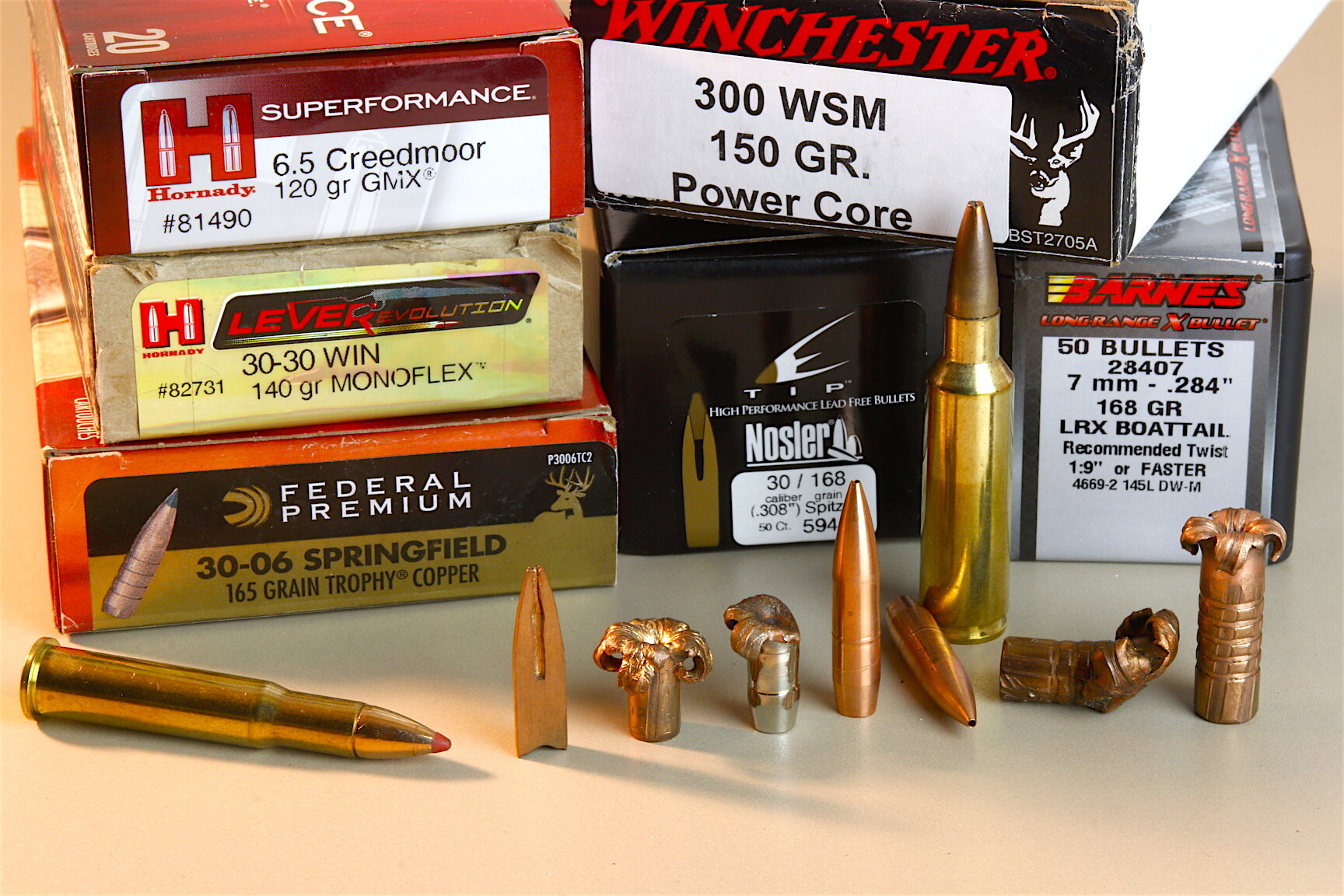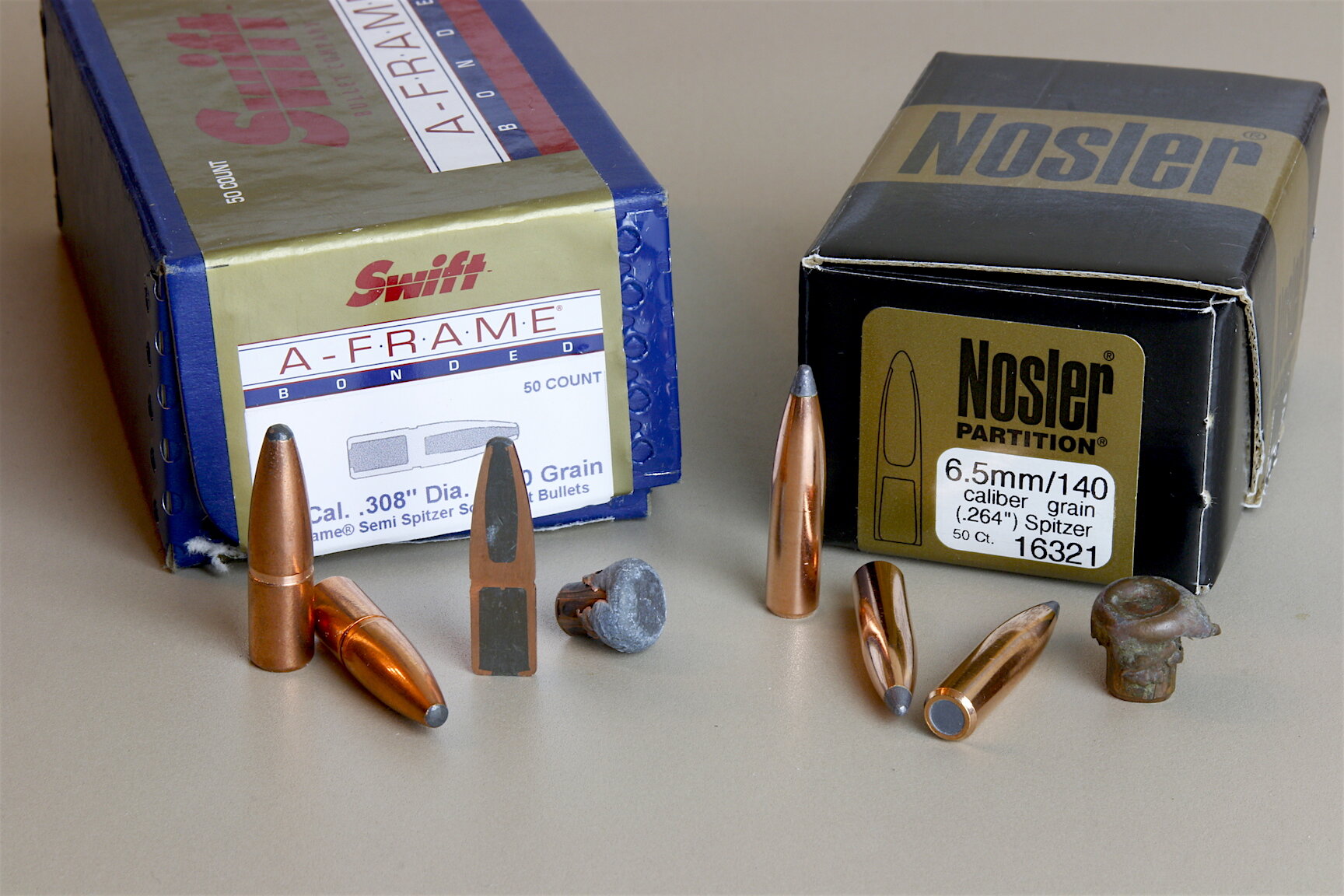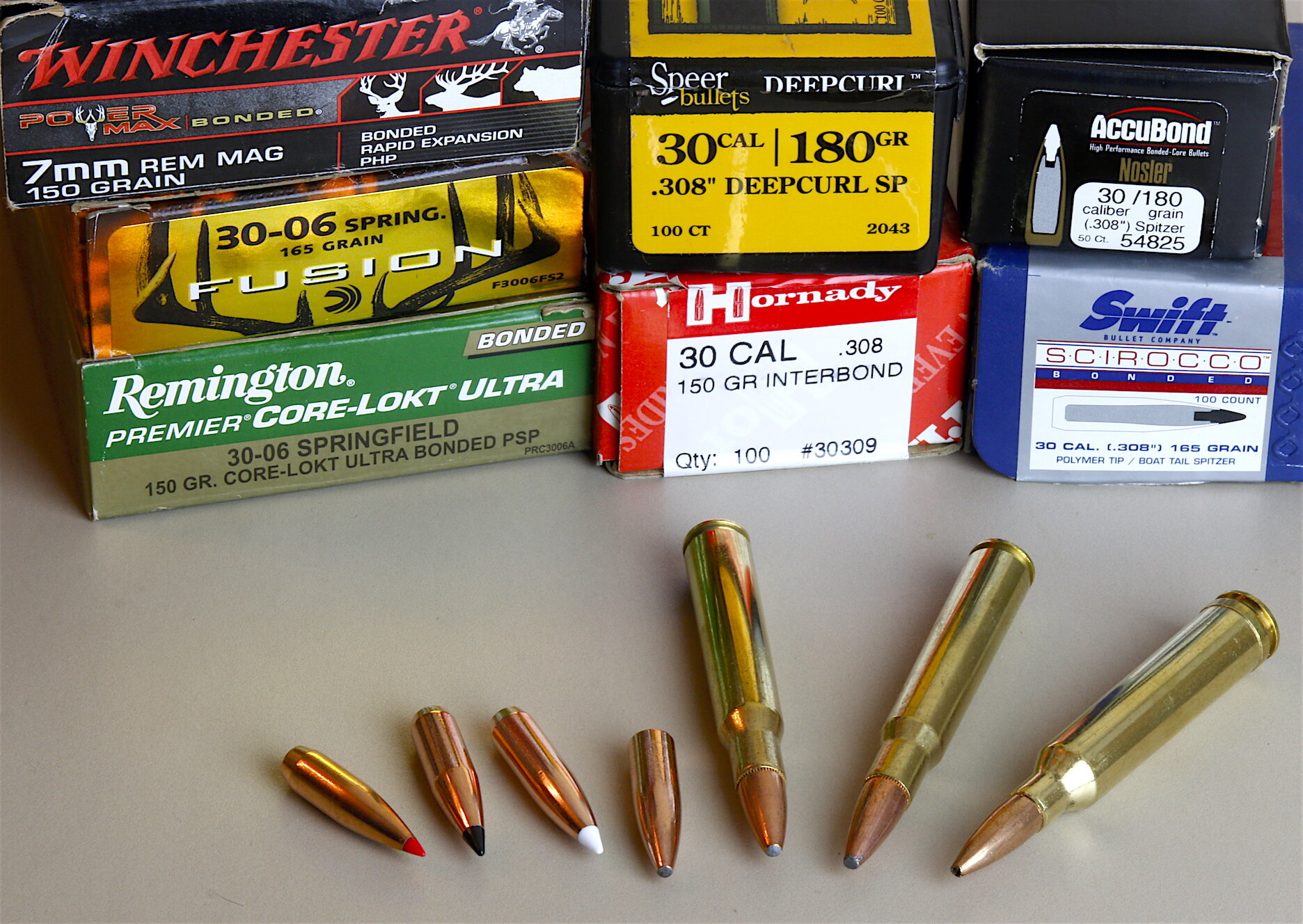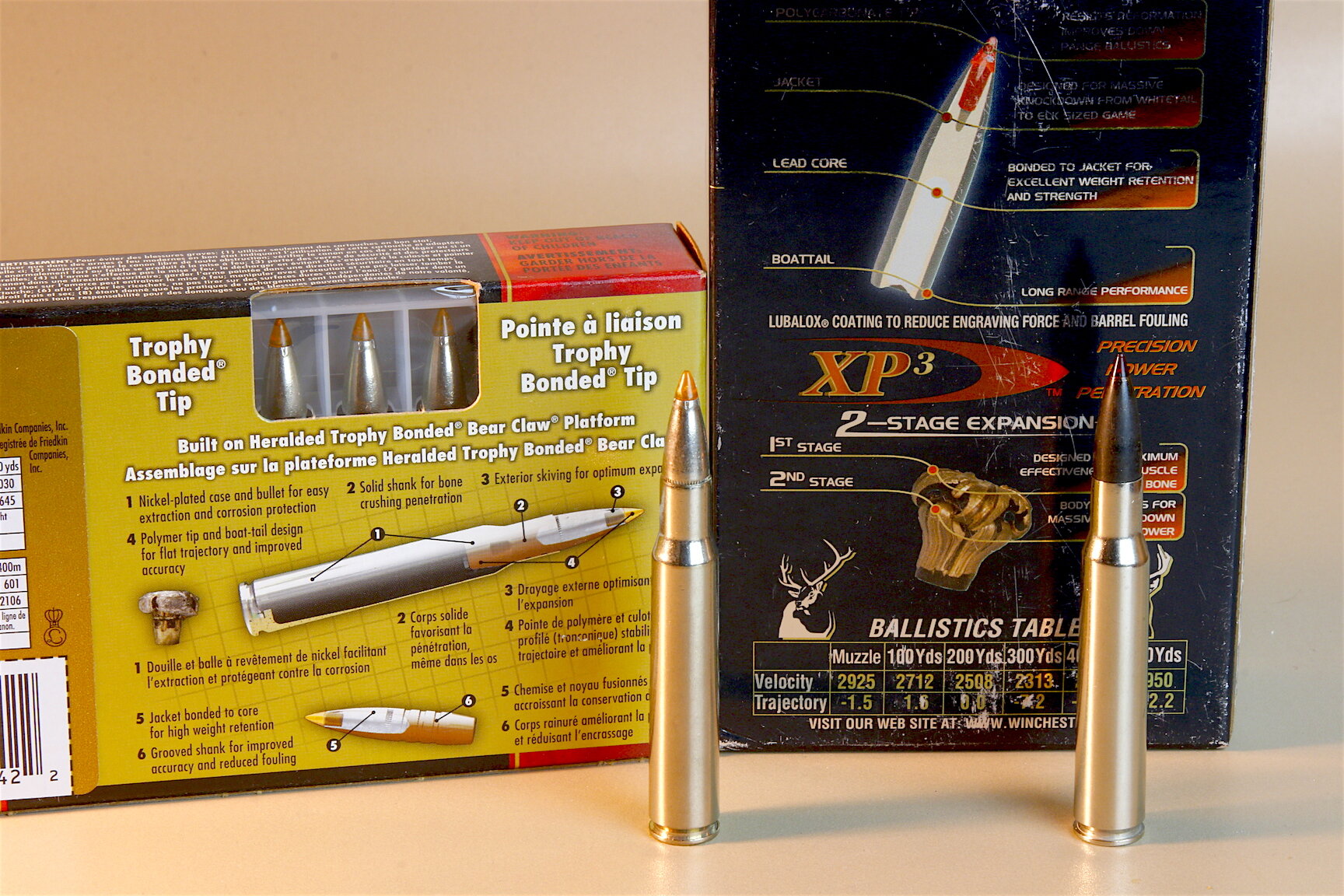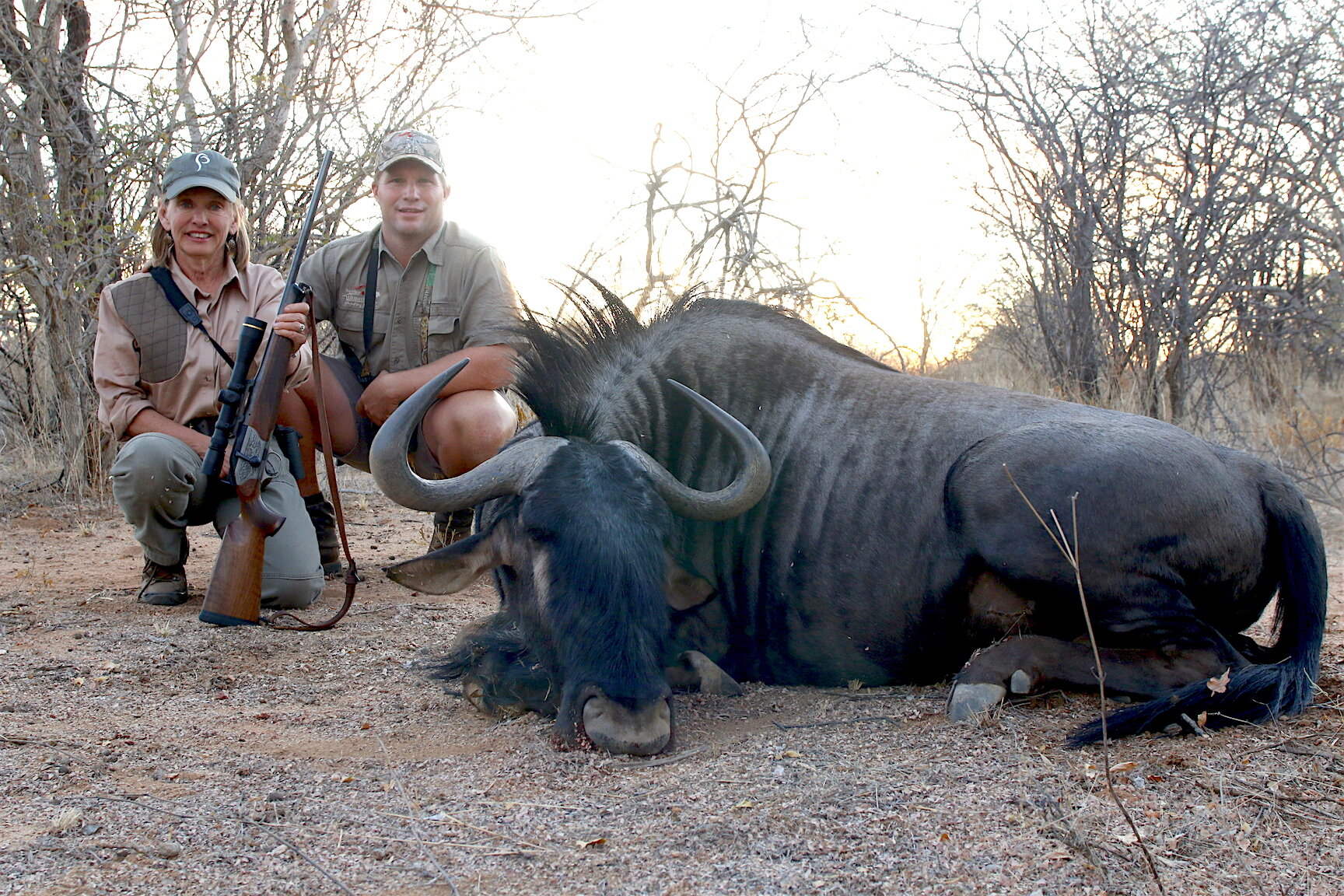Controlled Expansion Bullets Explained
L to R: Expanded Cup-Core, Partition, Bonded, Monolithic bullets.
What exactly are controlled expansion bullets? Darned useful missiles for taking big, big game -- and smaller game when applied properly.
Traditional cup-core big game bullets (detailed in this previous blog) work well at “standard” impact velocities. Cup-and-core bullets are generally effective when placed in the heart/lung cavity without trying to force them through major muscle and bone first. Examples of standard velocity cartridges and suitable cup-core bullet weights include but are not limited to 150-grain 30-30 Winchester, a 115-grain 257 Roberts, 150-grain 308 Winchester and 165-grain 30-06. Faster (magnum) cartridges and/or larger game than whitetails often demand increased penetration, and that's what controlled expansion bullets are engineered to do.
Controlled expansion bullets are called that because they are designed to stay in one piece despite high impact speeds and expand about 1.5X to 2X caliber. Limiting expansion reduces frontal area friction. This helps them plow through walls of tough, thick tissue in order to reach the vitals of large animals. Here's how they do it:
Partitioned Bullets
Partitioned Controlled Expansion Bullets
These are so named because there is a transverse wall of gilding metal jacket material between the lead in the nose of the bullet and the lead in the shank, creating two partitions. If the nose lead breaks or erodes away, the shank lead remains to continue driving forward. John Nosler created the first Partitions after cup-and-core bullets at magnum velocities failed to penetrate the muddy hide of a moose. Nosler Partitions expand like cup-and-cores and often lose all their nose lead, but remaining shank lead keeps weight between 40% and 50% of original mass. I typically find them against the offside hide of large game shot broadside. They usually shoot through whitetails broadside.
Swift’s A-Frame is a beefier partition-style bullet with a thicker, pure copper jacket. In addition, the nose lead is bonded to the jacket, so A-Frames typically retain 80% to 90% original mass and expand about 1.5X original diameter. They penetrate extremely well through thick hair, hide, muscle and bone. A-Frames usually shoot broadside through animals as big as moose, kudu and elk.
Bonded Bullets
You can't identify a bonded bullet by outward appearances.
Bonded bullets are similar to cup-and-cores except jacket and core are “welded” so that they bond at the molecular level. The pure lead cores usually erode against bone and muscle, but cannot separate from the jacket, so retained weight remains high for deeper penetration. At high impact speeds, erosion loss can exceed 50 percent, and the soft lead can be mangled violently by heavy bone. Bonded bullets can be built in a variety of forms including semi-spitzer, round nose, polymer tipped, open tipped, VLD and more. Examples are Swift Scirocco, Remington Core-Lokt Ultra, Norma Oryx, Winchester Power Max, Nosler Accubond, Federal Fusion, Hornady Interbond, Speer Deep Curl.
Monolithic Bullets
Monolithic Controlled Expansion Bullets
These are made of one material, either pure copper or a copper alloy, so there are no disparate metals to separate. Expansion is achieved via a hollow cavity in the nose, which can be open at the tip or capped with a polymer tip, sometimes a brass tip. On impact the tip is driven into the hollow to initiate expansion. When moist tissue enters hollow point designs, hydraulic forces peel back the nose like a banana. Some nose hollows are notched internally to break along seams, creating four to six distinct petals. The depth of the hollow determines how far expansion continues. Upon striking major bones, petals can shear away.
Some monolithics, like Norma's Kalahari, are engineered to shed their petals during penetration. Petals or no petals, sufficient mass remains in the shank of these bullets to maintain significant inertia. Monolithics usually shoot completely through animals standing broadside. If applied "south-to-north," they have the toughness to break major bone and often reach the chest cavity vitals. Because monolithics retain 90% to 100% of their original mass and don't expand excessively, they usually penetrate better than cup-core bullets of the same caliber weighing considerably more. For example, a 120- or 130-grain copper bullet would be expected to penetrate as well as or better than a 140 or 160-grain cup-core of the same caliber. This also means the lighter monolithics can be launched at higher velocities for flatter trajectories and less felt recoil. Examples include Barnes TSX, TTSX, LRX; Nosler E-Tip, Hornady GMX, NormaUSA Kalahari, Winchester Power Core, Federal Trophy Copper.
Hybrid Bullets
Hybrid Controlled Expansion Bullets
Hybrids can be any combination of the above features, i.e. all copper shank with a bonded lead nose; a hollow copper nose with a lead core shank, etc. Examples include Federal Bonded Tip and Trophy Bonded Bear Claw. Adding lead to any part of a copper bullet increases its mass. This increases its ballistic coefficient and retained energy.
Any of the above bullet types can be fitted with a polymer tip, often mistakenly called a Ballistic Tip. That phrase is Nosler’s copyright term for its poly-tipped bullet. These tips, if sharply pointed, improve a bullet’s aerodynamics slightly, but are mainly designed to eliminate the tip deformation common to exposed lead tips. Poly-tips also drive back into lead cores to initiate expansion.
Boat tails on a bullet’s base improve aerodynamics. Combined with long, sharply tapered and pointed noses, boat tails can reduce bullet drag enough to decrease drop and wind deflection by several inches at long range, but inside of 300 yards hardly make enough difference to matter.
Heavily muscled and boned, Namibia's blue wildebeest is a big, tough animal, but a 150-grain Norma Kalahari monolithic bullet from a Blaser in 308 Winchester finished it with one shot from 245 yards.
Hunters should choose bullets based on accuracy in their rifles, the velocity their cartridges/rifles put out, the size/bulk of game targeted, and the anticipated shooting distance. The higher the impact velocity, the harder the bullet should be (controlled expansion.) Smaller, thin-skinned game can be addressed with softer, wider mushrooming bullets since deep penetration isn’t essential. Elk, moose (as this video dramatizes) and big bears call for tougher, harder, controlled expansion bullets designed to retain more mass and penetrate deeply. Sleek, pointy bullet shapes reduce air drag which translates into more retained energy, less drop and less wind drift downrange. Remember, at extreme range, bullet speed and energy drop dramatically from muzzle velocity. The wrong bullet at 50 yards might be the right bullet at 350 yards.
Finally, remember that bullet placement beats materials, construction and shape every time. Park your bullet in the right spot and it’s performance will be optimum, controlled expansion bullets or not.
# # #


